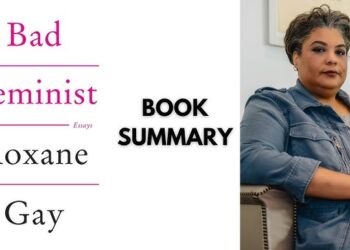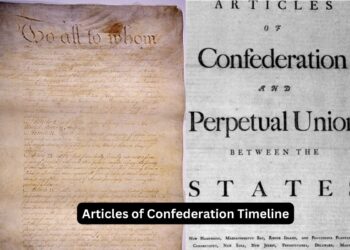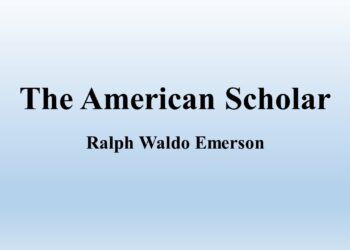Dig It Up Again Essay by Ryan Ruby
Dig It Up Again Essay by Ryan Ruby-In “Dig It Up Again,” Ryan Ruby embarks on a fascinating journey into the realms of literary revival and reinterpretation. Through a blend of personal reflection, critical analysis, and literary theory, Ruby illuminates the nuances of revisiting and reassessing classic texts. This essay summary seeks to unravel the central themes, arguments, and revelations presented by Ruby in “Dig It Up Again.”
Deciphering the Title:
Ruby initiates his discourse by dissecting the evocative title, “Dig It Up Again,” which serves as a metaphor for the act of uncovering and rediscovering literary treasures. This title beckons readers to embark on a quest into the depths of literary history, urging them to excavate forgotten narratives and explore new dimensions of familiar works.
The Art of Literary Rediscovery:
At the core of Ruby’s essay lies an exploration of the art of literary rediscovery, which involves unearthing hidden meanings, reevaluating established interpretations, and breathing fresh life into canonical texts. Drawing from his own encounters as a reader and writer, Ruby reflects on the profound impact that revisiting classic literature can have on our understanding of culture and society.
Reimagining the Canon:
Ruby challenges the notion of a static literary canon, arguing instead for its dynamic nature and capacity for reinterpretation. He contends that each generation brings its own perspectives and sensibilities to bear on classic texts, thereby reshaping and revitalizing the canon. By encouraging readers to reimagine the canon, Ruby invites them to discover new layers of significance and relevance in timeless works.
Also Read-
- A Formal Feeling Comes Essay by Jamie Hood
- A Paradise With No Country Essay Summary
- I Wanted the Impossible by Heather Clark
Intertextual Dialogue:
Throughout the essay, Ruby explores the concept of intertextuality, highlighting the intricate web of connections between literary classics and contemporary writing. He examines how writers draw inspiration from their predecessors, engaging in a dialogue across time and space. This theme underscores the enduring influence of classic literature on the creative process and the ongoing evolution of literary tradition.
The Active Role of Readers:
Central to Ruby’s argument is the active role of readers in the process of literary exploration. He emphasizes that readers are not passive recipients of meaning but active participants in the interpretation and reimagining of classic texts. By engaging critically with the canon, readers can uncover hidden depths and contribute to the ongoing conversation surrounding literary heritage.
Dig It Up Again Themes
- Literary Excavation: At the core of Ruby’s discourse lies the theme of literary excavation, where the act of revisiting classic texts is akin to unearthing buried treasures. Ruby urges readers to delve beyond the surface of familiar works, revealing hidden depths and fresh perspectives that enrich our understanding of literature.
- Evolution of the Canon: Ruby challenges the notion of a stagnant literary canon, advocating for its dynamic nature. He illustrates how each generation brings its own interpretations and values to classic texts, perpetually reshaping and redefining the canon. This theme underscores the fluidity and adaptability of literary tradition over time.
- Interconnected Texts: Throughout the essay, Ruby explores the concept of intertextuality, emphasizing the interconnectedness of literary works across different epochs. He demonstrates how writers engage in a continuous dialogue with their predecessors, drawing inspiration and forging connections that transcend temporal boundaries. This theme underscores the ongoing influence of past literature on contemporary writing.
- Active Reader Participation: Central to Ruby’s thesis is the active role of readers in the process of literary exploration. He emphasizes that readers are not passive recipients of meaning but active participants who contribute to the ongoing interpretation and reinterpretation of classic texts. This theme highlights the interactive nature of literary engagement and the diverse perspectives that readers bring to their encounters with literature.
- Cultural Relevance: Ruby delves into the cultural significance of revisiting classic literature, exploring how these timeless works continue to resonate with contemporary audiences. He reflects on the enduring themes and universal truths found within classic texts, shedding light on their relevance to contemporary society and identity. This theme underscores the timeless relevance of classic literature in illuminating the human experience across different eras.
- Creative Reinterpretation: Finally, Ruby celebrates the creative potential inherent in the act of revisiting and reinterpreting classic texts. He encourages readers to approach these works with an open mind, embracing the challenge of critically engaging with the canon and uncovering new insights and interpretations. This theme highlights the transformative power of literary exploration in sparking fresh ideas and perspectives.
Conclusion:
In “Dig It Up Again” by Ryan Ruby, the exploration of themes surrounding literary rediscovery and reinterpretation culminates in a profound reflection on the enduring relevance of classic literature. Through critical analysis and personal reflection, Ruby illuminates the transformative power of revisiting familiar texts, urging readers to delve beneath the surface and uncover hidden depths of meaning. This essay summary seeks to encapsulate the key themes and insights presented by Ruby in “Dig It Up Again,” inviting readers to embark on their own journeys of literary exploration and discovery.
FAQ.
1. What inspired Ryan Ruby to write “Dig It Up Again”?
“Dig It Up Again” is inspired by Ruby’s own experiences as a reader and writer, as well as his fascination with the process of revisiting and reinterpreting classic literature. Ruby’s essay serves as a testament to the enduring power of classic texts to captivate and inspire readers across generations.
2. How does Ruby challenge traditional views of the literary canon?
Ruby challenges the notion of a static literary canon, advocating for its dynamic nature and capacity for reinterpretation. He illustrates how each generation brings its own perspectives and values to classic texts, reshaping and redefining the canon in the process.
3. What role does intertextuality play in “Dig It Up Again”?
Intertextuality is a central theme in “Dig It Up Again,” highlighting the interconnectedness of literary works across different epochs. Ruby explores how writers engage in a continuous dialogue with their predecessors, drawing inspiration and forging connections that transcend temporal boundaries.
4. How does Ruby emphasize the importance of reader participation?
Ruby emphasizes the active role of readers in the process of literary exploration, highlighting their contributions to the ongoing interpretation and reinterpretation of classic texts. He encourages readers to approach these works with an open mind, embracing the challenge of critically engaging with the canon.
5. What is the enduring message of “Dig It Up Again”?
At its core, “Dig It Up Again” celebrates the transformative power of revisiting and reinterpreting classic literature. Ruby’s essay serves as an invitation for readers to embark on their own journeys of literary exploration, where the past converges with the present to illuminate the enduring relevance of timeless literary works.

















